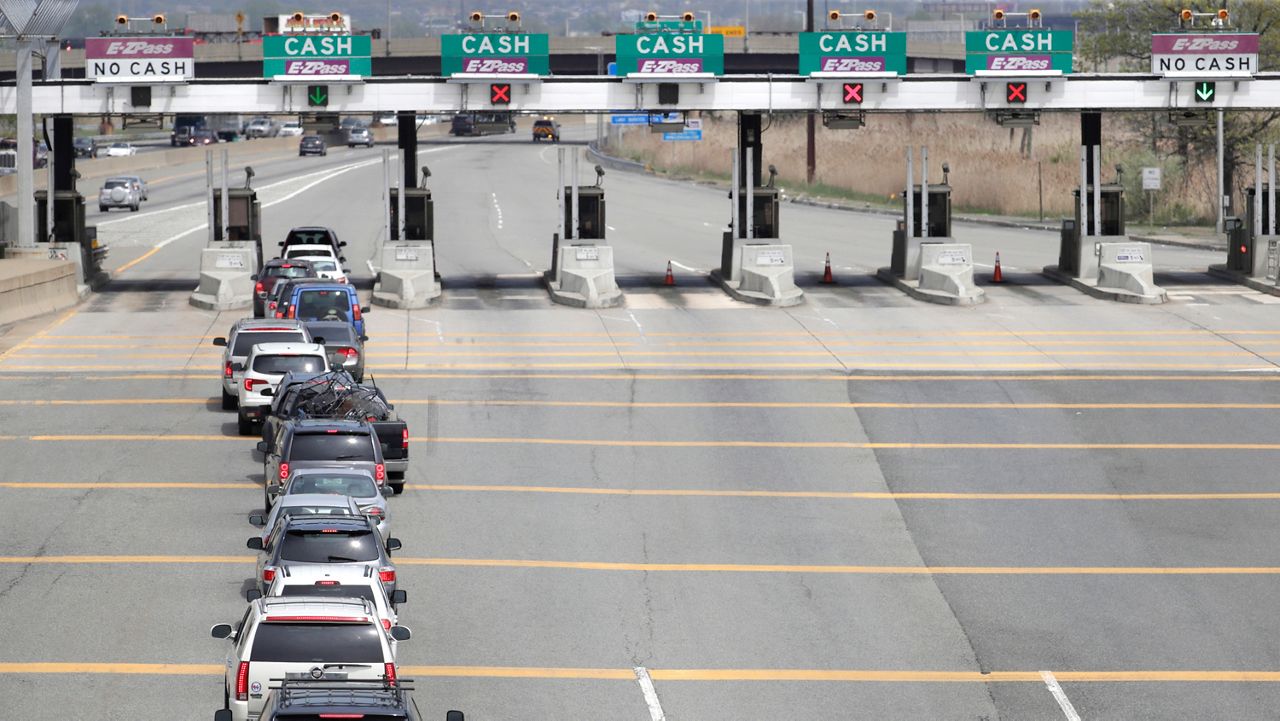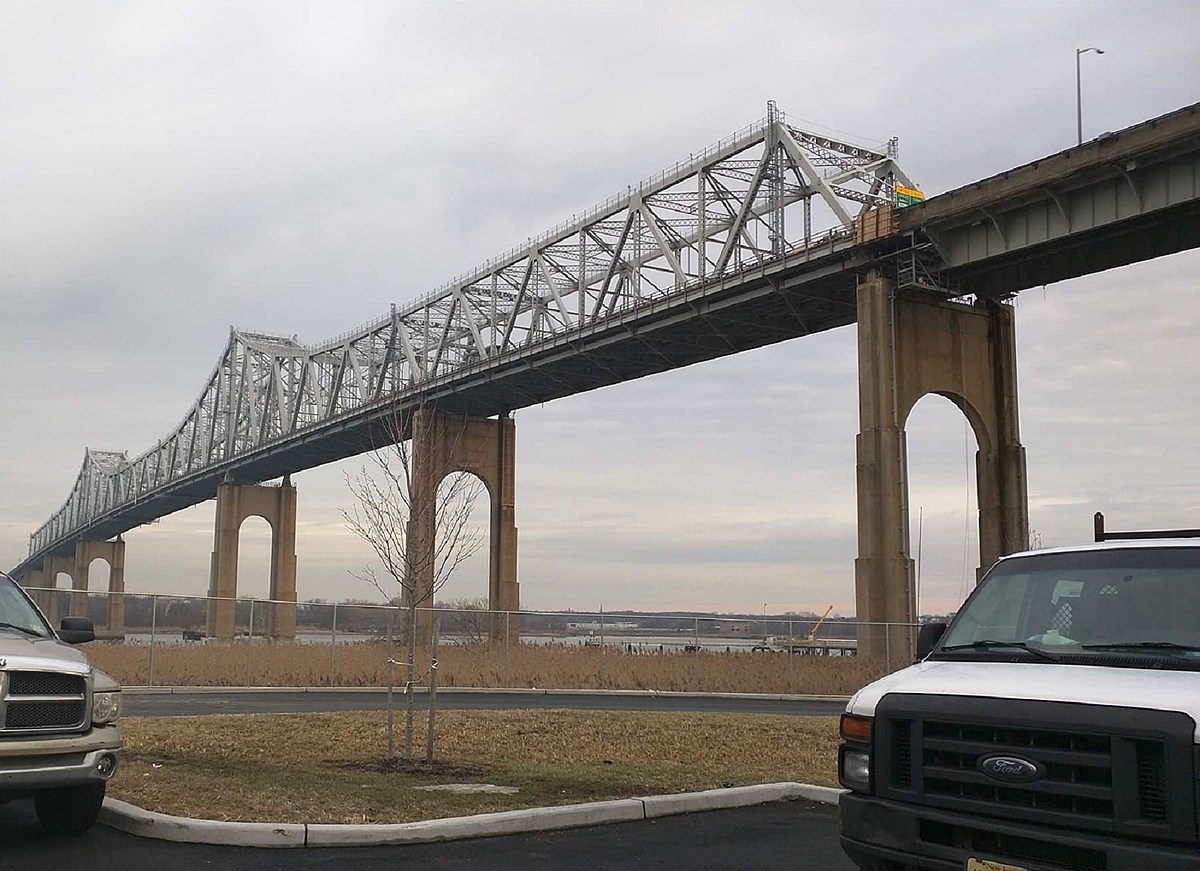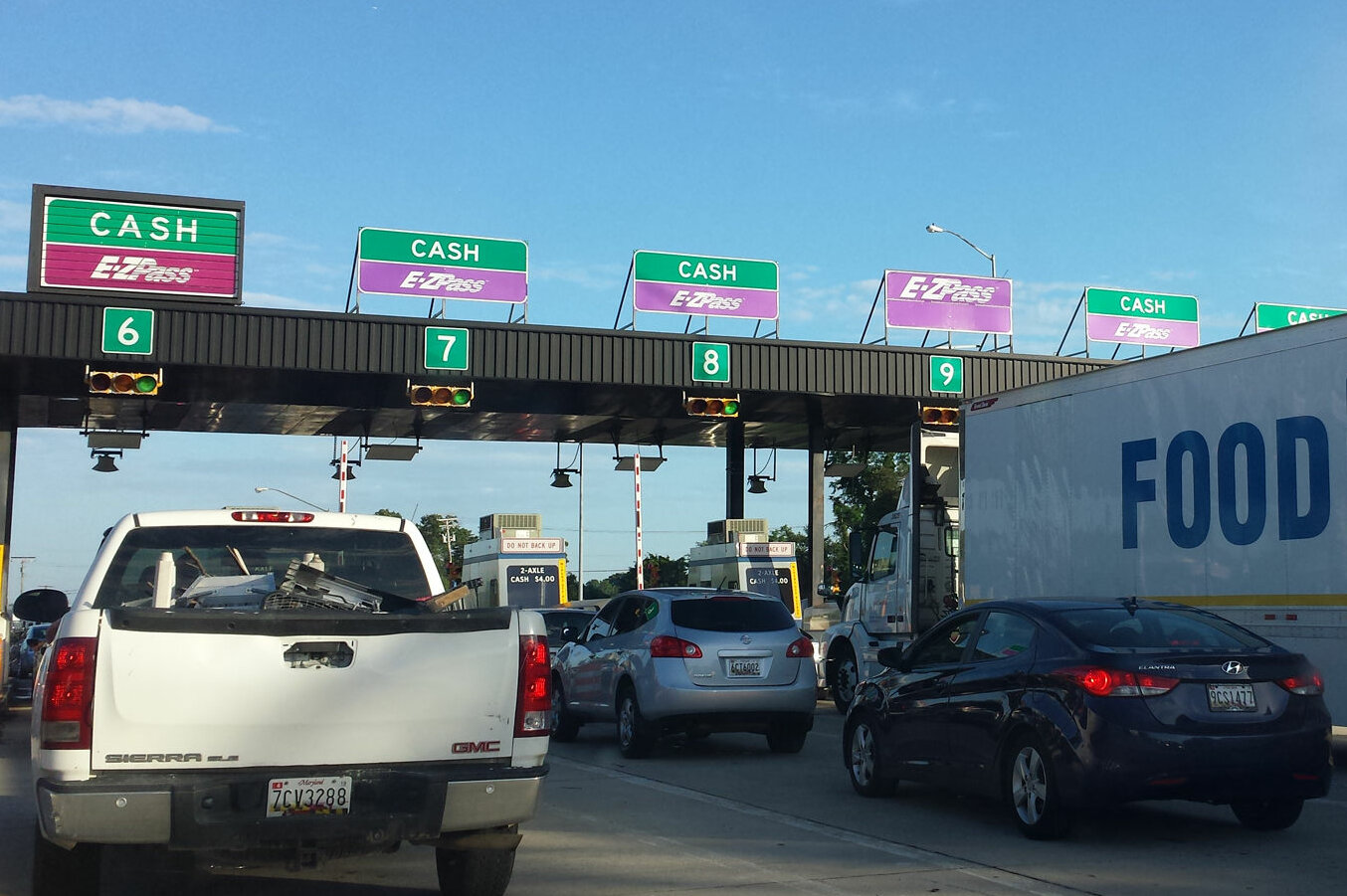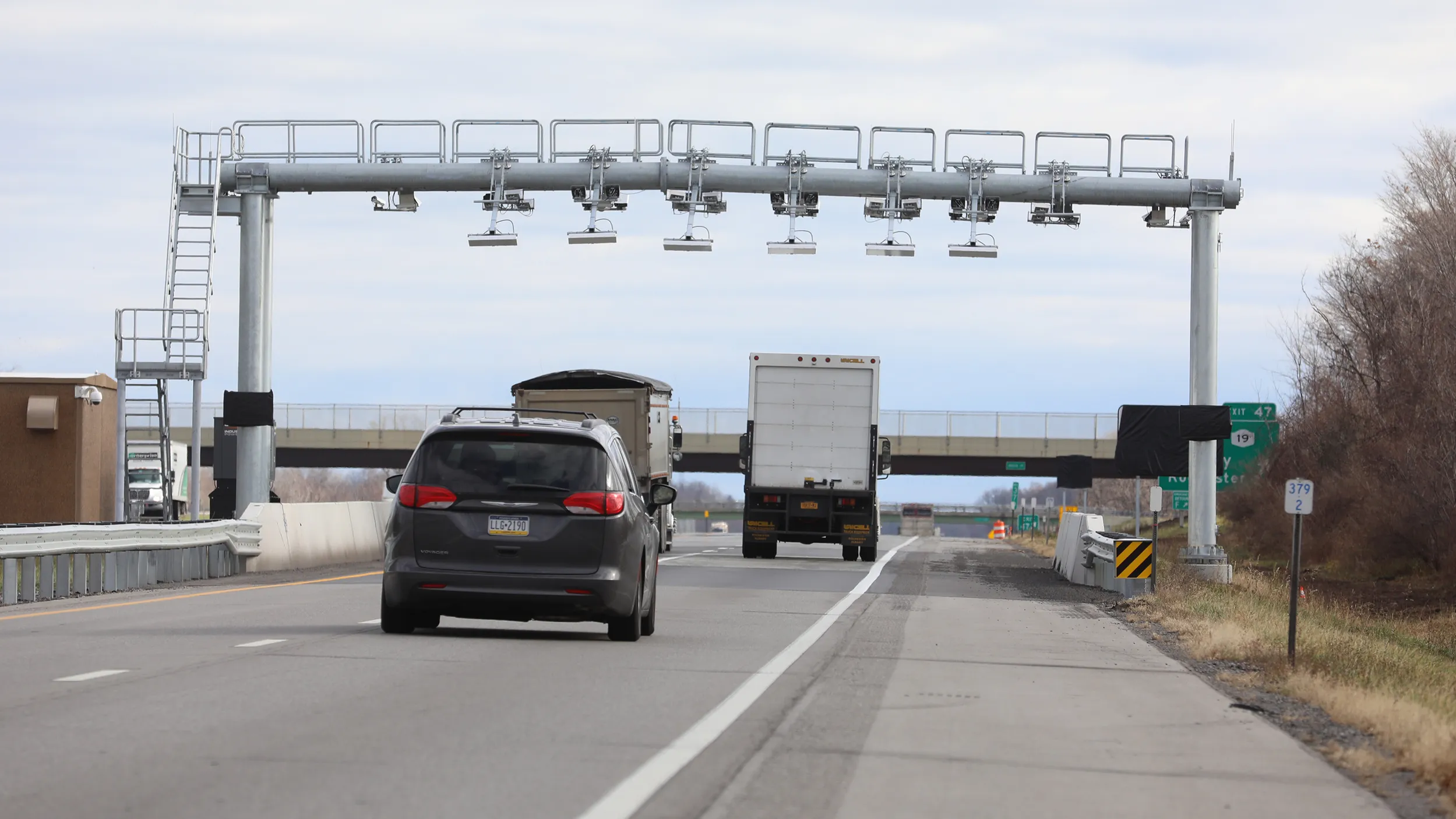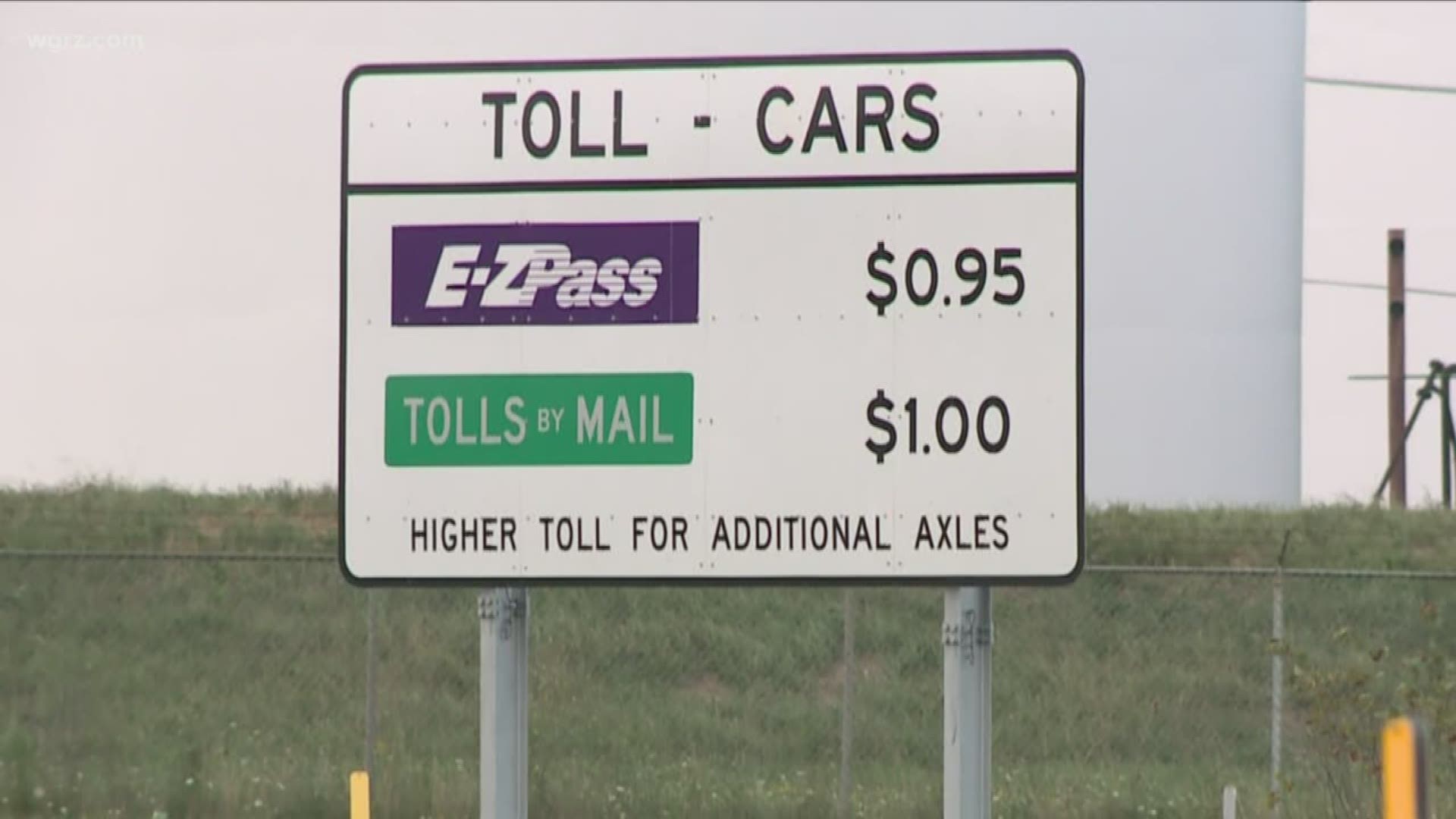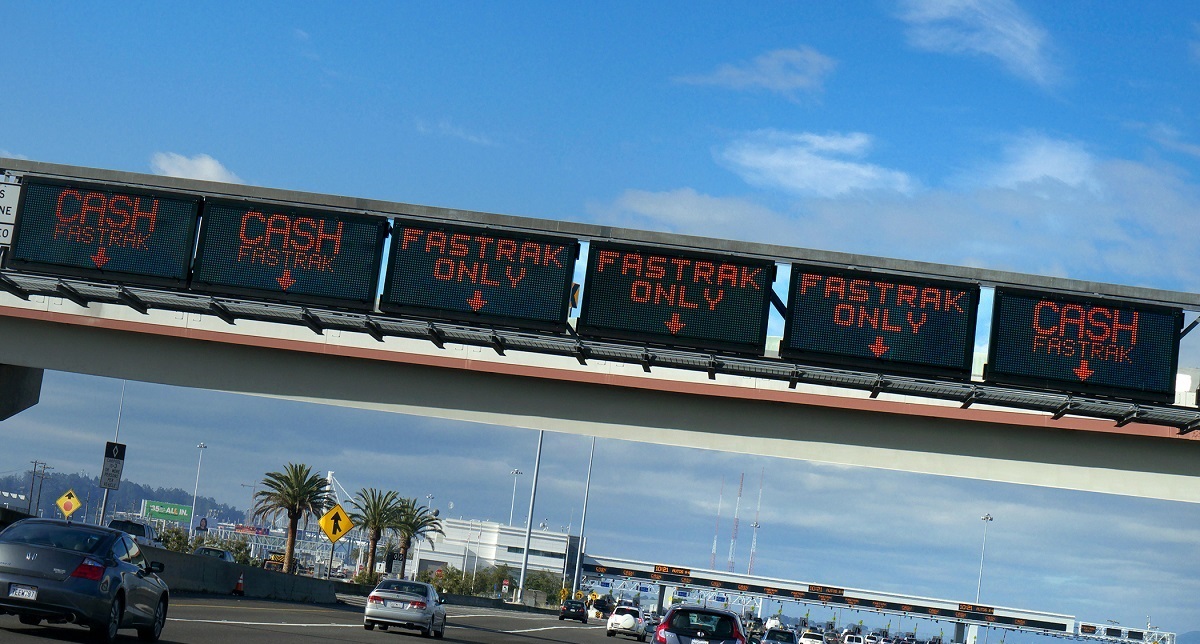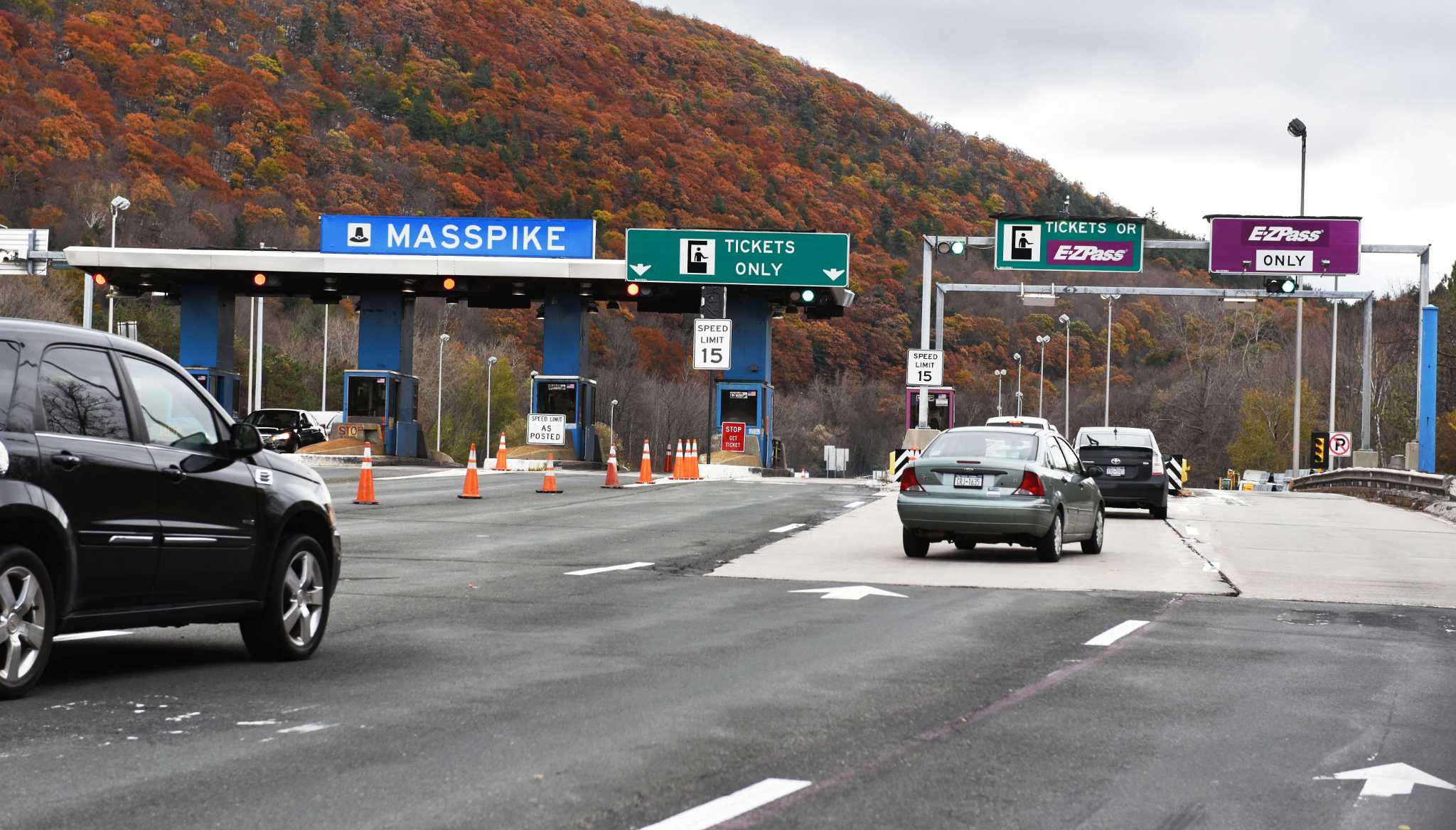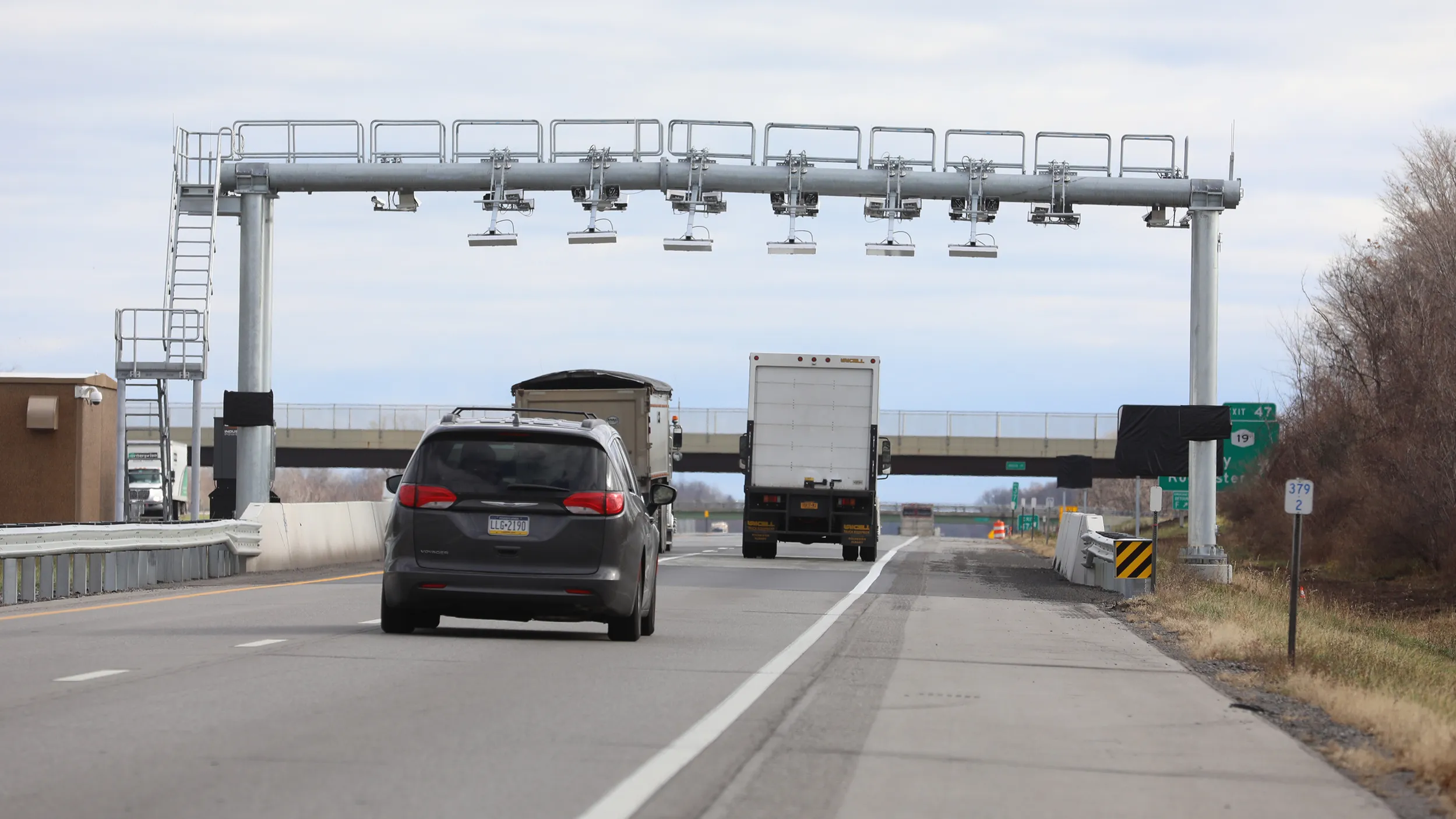Introduction
Welcome to the world of cashless tolls! Gone are the days of fishing for loose change or frantically searching for a toll booth attendant. With the advancement of technology, toll roads across the country have transitioned to cashless systems, where electronic payments are collected automatically without the need for physical currency. While the convenience of cashless tolls is undeniable, what happens if you find yourself without an E-ZPass?
E-ZPass, a widely used electronic toll collection system, allows drivers to breeze through toll plazas without stopping. It uses radio frequency identification (RFID) technology to automatically deduct toll charges from a pre-funded account as vehicles pass through designated toll lanes. However, if you don’t have an E-ZPass, you may encounter a few challenges when it comes to traveling on cashless toll roads.
In this article, we will explore the consequences of not having an E-ZPass and provide some tips on how to navigate cashless tolls without one. So, buckle up and let’s dive into the world of cashless tolls!
What Are Cashless Tolls?
Cashless tolls, also known as all-electronic tolling or open-road tolling, are a modernized system of collecting toll fees on highways and bridges without the need for physical payment at the time of travel. Instead of stopping at traditional toll booths and handing over cash or a ticket, drivers with electronic toll collection accounts use transponders or license plate recognition systems to pay their tolls.
The transition to cashless tolls aims to improve traffic flow, reduce congestion, and enhance safety on toll roads. By eliminating the need for drivers to stop and fumble for change or tickets, cashless tolls allow for a smoother and more efficient journey, particularly during peak travel times.
With cashless tolls, drivers can either use an E-ZPass transponder, which is linked to a pre-funded account, or have their license plate photographed, and a bill is mailed to the registered owner of the vehicle. The toll charges are then automatically deducted from the account or can be paid by mail.
It is important to note that cashless tolls are not limited to a specific region. They have been implemented in various states across the United States, including New York, New Jersey, Pennsylvania, Florida, and California, to name a few.
What Is E-ZPass?
E-ZPass is an electronic toll collection system that allows drivers to pay tolls without using cash or credit cards at specific toll plazas. It was first introduced in the United States in the mid-1990s and has since become one of the most widely used toll payment methods.
At its core, E-ZPass utilizes radio frequency identification (RFID) technology to enable seamless transactions at toll booths. Drivers attach a small electronic transponder to their vehicle’s windshield, which emits a unique signal when passing through the designated E-ZPass lanes. The toll system then reads the transponder and deducts the appropriate toll amount from the driver’s E-ZPass account.
Obtaining an E-ZPass is relatively straightforward. Drivers can apply for an account online or visit designated customer service centers or retailers in their region. During the application process, drivers link their preferred payment method, such as a credit card or bank account, to their E-ZPass account to enable automatic replenishment of funds when necessary.
Once an E-ZPass account is set up, drivers can benefit from a wide array of advantages. Not only does E-ZPass offer a convenient and expedited method of paying tolls, but it is also accepted across multiple states, making it an excellent option for frequent travelers.
Additionally, E-ZPass users often enjoy lower toll rates compared to those paying in cash. Many toll authorities offer discounted rates or promotions for E-ZPass holders to incentivize the adoption of this efficient payment method. These savings can quickly add up for drivers who frequently travel on toll roads.
Overall, E-ZPass provides a hassle-free and efficient way to navigate cashless toll roads, reducing congestion and enhancing the overall driving experience.
Benefits of Using E-ZPass
Using E-ZPass for toll payment offers various advantages for drivers. Let’s take a closer look at some of the key benefits:
- Convenience: With an E-ZPass transponder, drivers can breeze through toll plazas without the need to stop and fumble for cash or tickets. This saves valuable time and reduces travel delays, particularly during peak hours.
- Efficiency: E-ZPass lanes are typically designed to accommodate a higher volume of traffic, allowing for a smoother flow of vehicles. This helps to alleviate congestion and improve overall traffic conditions on toll roads.
- Cost Savings: E-ZPass users often benefit from discounted toll rates compared to those paying in cash. Many toll authorities offer reduced rates or special promotions exclusively for E-ZPass holders, allowing drivers to save money on their travels.
- Interoperability: E-ZPass is widely accepted in multiple states across the country. This means that drivers with an E-ZPass can use it to pay tolls on participating toll roads and bridges in different regions, providing seamless and convenient travel options.
- Account Management: E-ZPass accounts can be easily managed online, allowing drivers to monitor their toll transactions, replenish funds, and update their account information with ease. This level of control and accessibility simplifies the administrative side of toll payment.
- Environmental Benefits: With reduced wait times and smoother traffic flow, using E-ZPass can contribute to a reduction in overall carbon emissions. This is particularly important in heavily congested areas where idling vehicles at toll plazas can significantly add to pollution levels.
Overall, the benefits of using E-ZPass extend beyond mere convenience. By providing an efficient, cost-effective, and environmentally friendly toll payment solution, E-ZPass enhances the overall driving experience for its users.
Consequences of Not Having E-ZPass
While traveling without an E-ZPass on cashless toll roads is certainly possible, it may come with a few consequences. Let’s explore some of the challenges you may encounter:
- Increased Wait Times at Toll Booths: Without an E-ZPass, you’ll need to use the traditional cash lanes at toll plazas. These lanes are often slower and can experience more congestion compared to the dedicated E-ZPass lanes. This means you may experience longer wait times, especially during peak travel hours.
- Paying Tolls by Mail: If you don’t have an E-ZPass, your toll charges will typically be collected by mail. This means that you will receive a bill for the tolls you owe, usually within a specified time period. While this allows you to still pay your tolls, it can be more time-consuming and potentially subject to additional processing delays.
- Additional Fees and Administrative Costs: Many toll authorities charge administrative fees for tolls paid by mail or via license plate recognition. These fees can vary depending on the location and the number of tolls incurred. Over time, these additional fees can significantly increase the overall cost of using toll roads without an E-ZPass.
- Inconvenience for Out-of-State Travelers: If you’re traveling from out of state or visiting a region where you don’t have an E-ZPass account, navigating cashless toll booths can be particularly challenging. You’ll need to familiarize yourself with the specific toll payment processes and ensure that you have the necessary information or forms to pay the tolls by mail.
- Lack of Discounts and Benefits: E-ZPass users often enjoy discounted toll rates and exclusive promotions. Without an E-ZPass, you won’t have access to these cost-saving benefits, potentially resulting in higher overall toll expenses.
While these consequences may be manageable for occasional toll road users, frequent travelers or those living in regions with extensive cashless toll systems may find it more advantageous to obtain an E-ZPass account to enjoy the benefits and convenience that come with it.
Increased Wait Times at Toll Booths
One of the significant consequences of not having an E-ZPass on cashless toll roads is the potential for increased wait times at toll booths. Without an E-ZPass transponder, you will need to use the traditional cash lanes, which are often slower and experience more congestion compared to the dedicated E-ZPass lanes. This can result in longer wait times, particularly during peak travel hours.
Using the cash lanes means that you’ll have to come to a complete stop at each toll booth to pay in cash or receive a ticket. This process can be time-consuming, especially if there are multiple vehicles ahead of you. Additionally, the cash lanes are typically designed to accommodate a smaller volume of traffic compared to the E-ZPass lanes, leading to potential bottlenecks and slower traffic flow.
During peak travel periods, such as holidays or rush hours, the increased number of vehicles relying on cash lanes can exacerbate congestion and lead to significant delays. Long lines and frustrated drivers can make the toll plaza experience unpleasant and stressful.
It’s important to note that even during non-peak times, using cash lanes can still result in longer wait times compared to using an E-ZPass. The convenience and speed of the E-ZPass system allow drivers to simply drive through the designated lanes without stopping, significantly reducing the time spent at toll plazas.
Furthermore, the increased wait times at toll booths can have a ripple effect on overall traffic flow. Slow-moving or stagnant lines at cash lanes can spill over into neighboring lanes, causing congestion and delays for all drivers passing through the toll plaza. This can create a domino effect and lead to congestion on the entire roadway, impacting not only those traveling through the toll plaza but also drivers on the surrounding routes.
In summary, not having an E-ZPass can result in increased wait times at toll booths due to the use of slower and congested cash lanes. To avoid these delays and enjoy a smoother travel experience, it’s advisable to obtain an E-ZPass and use the dedicated E-ZPass lanes whenever possible.
Paying Tolls by Mail
If you don’t have an E-ZPass, paying tolls by mail is typically the alternative method available for cashless toll roads. Instead of paying at the toll booth, drivers without an E-ZPass will receive a bill in the mail for the tolls they owe.
When you pass through a cashless toll plaza without an E-ZPass, cameras will capture an image of your license plate. Using this image, the tolling authority will identify the registered owner of the vehicle and send a bill for the toll charges incurred during that journey.
Once you receive the toll bill, it will include instructions on how to make the payment. This usually involves sending back the bill with a check or money order for the specified amount. Some tolling authorities also offer online payment options where you can enter your vehicle and payment information to settle the tolls electronically.
It is crucial to pay the toll bill promptly to avoid additional penalties or fees. Each tolling authority will have specific guidelines and deadlines for payment, so it’s essential to review the instructions carefully to ensure compliance.
One potential drawback of paying tolls by mail is that the process can be more time-consuming compared to using an E-ZPass. It can take several days or even weeks for the toll bill to reach your mailbox, and then additional time is required for the payment to be processed and credited to your account.
Moreover, relying on mail payment introduces the risk of potential delays or errors. The mail system is not infallible, and there is always a possibility of documents getting lost, misplaced, or not reaching their destination on time. Any delays in payment can result in incurring additional fees or penalties from the tolling authority.
Overall, while paying tolls by mail is a viable option for those without an E-ZPass, it is important to be mindful of the potential delays and adhere to the payment instructions provided to avoid any complications or additional costs.
Additional Fees and Administrative Costs
Using cashless toll roads without an E-ZPass can come with additional fees and administrative costs that may increase your overall expenses. Here are some factors to consider:
1. Administrative Fees: Toll authorities often charge administrative fees for tolls paid by mail or through license plate recognition systems. These fees can vary depending on the tolling authority and the number of tolls incurred. Over time, these additional fees can accumulate and significantly impact the cost of using toll roads without an E-ZPass.
2. Additional Billing Costs: In addition to administrative fees, toll bills paid by mail may have additional billing costs. This can include fees for processing, handling, and mailing the toll bills. These extra charges can further add to the overall expense of using cashless toll roads without an E-ZPass.
3. Late Fees and Penalties: Failure to promptly pay toll bills or meet the payment deadlines specified by the tolling authority can result in late fees and penalties. These charges can vary depending on the jurisdiction but can quickly add up if toll payments are consistently delayed or neglected.
4. Collection Agencies: If toll bills remain unpaid for an extended period, toll authorities may escalate the matter to a collection agency. This can result in additional fees and potential damage to your credit score if the unpaid tolls are not resolved promptly.
5. Inability to Contest Tolls: Without an E-ZPass account, it may be more challenging to contest toll violations or discrepancies. E-ZPass users typically have easier access to customer service representatives who can assist in resolving any billing discrepancies or erroneous charges. Not having an E-ZPass may limit your ability to dispute toll bills effectively.
It’s crucial to understand the specific fee structure and policies of the tolling authority in the region you are traveling through. Familiarize yourself with the payment deadlines, administrative charges, and procedures for resolving any billing issues to minimize the additional costs associated with using cashless toll roads without an E-ZPass.
Considering these factors, acquiring an E-ZPass can be a cost-effective option for regular or frequent toll road users, as it helps to avoid the potential accumulation of additional fees and administrative costs.
Inconvenience for Out-of-State Travelers
Traveling on cashless toll roads without an E-ZPass can be particularly inconvenient for out-of-state travelers. Here are some reasons why:
1. Unfamiliarity with Local Toll Systems: Each state or region may have its own cashless toll system and payment procedures. For out-of-state travelers who are not familiar with the specific tolling system in a particular area, navigating the cashless toll booths can be confusing and challenging. Understanding the different tolling authorities, their billing processes, and the specific steps to pay tolls by mail requires additional research and preparation.
2. Lack of Knowledge about Toll Rates: Out-of-state travelers may not be aware of the specific toll rates on cashless toll roads they encounter. Without an E-ZPass, they are unable to take advantage of discounted toll rates or special promotions that may be available to regular users. This lack of knowledge can lead to unexpected toll expenses and potential budgetary concerns.
3. Difficulty Accessing Local Payment Methods: Paying tolls by mail in a different state can be challenging. Local residents often have access to regional payment options such as online portals or designated payment centers. Out-of-state travelers, on the other hand, may face difficulties in accessing these local payment methods, which can result in additional inconveniences and delays in settling toll charges.
4. Inefficient Handling of Toll Bills: For out-of-state travelers, receiving toll bills by mail can pose logistical challenges. The mailing process adds additional time for toll bills to reach their destination, making it critical to ensure that bills reach the correct address and payment is sent back promptly. Any delays or complications in handling toll bills can result in late fees, penalties, or toll violations.
5. Limited Options for Customer Support: Resolving any billing inquiries or disputes for out-of-state travelers can be more difficult without the convenience of local customer support services. E-ZPass users often have access to dedicated customer service representatives who can assist with any issues promptly. Without an E-ZPass, out-of-state travelers may face longer response times or limited avenues for addressing their concerns.
To mitigate these inconveniences, out-of-state travelers should research the tolling systems in their destination area, familiarize themselves with the payment options, and plan their journeys accordingly. Additionally, considering the frequent use of cashless toll roads, obtaining a temporary E-ZPass or exploring other electronic toll collection options can provide a smoother and more seamless travel experience.
Tips for Dealing with Cashless Tolls Without E-ZPass
If you find yourself traveling on cashless toll roads without an E-ZPass, there are several tips to help navigate the toll payment process. Here are some useful strategies:
1. Research the Tolling System: Before embarking on your journey, take the time to research the cashless tolling system in the area you will be traveling through. Familiarize yourself with the tolling authority, their payment methods, their billing processes, and any specific requirements for paying tolls by mail.
2. Keep Track of Your Toll Usage: Make a note of the toll plazas you pass through and keep a record of the dates and times of your travels. This can help ensure that you receive accurate billing and can serve as a reference in case of any billing discrepancies or toll violations.
3. Set Aside Funds for Toll Payments: Since you won’t have the convenience of an E-ZPass to automatically deduct toll charges, it’s important to set aside funds specifically for toll payments. This will help you ensure that you have the necessary funds available when the toll bill arrives so that you can settle it promptly.
4. Allow Sufficient Time for Payment: Be mindful of the payment deadlines specified by the tolling authority. Take into account the time it takes for toll bills to reach you by mail and for your payment to be processed and credited to your account. Allowing ample time for payment will help you avoid any late fees or penalties.
5. Consider Online Payment Options: Some tolling authorities offer online payment options, allowing you to enter your toll bill information and make payments electronically. Explore if this option is available and consider taking advantage of it for a quicker and more convenient payment process.
6. Keep Documentation and Receipts: When paying tolls by mail, it is wise to keep copies of your toll bills, payment receipts, and any correspondence with the tolling authority. These documents can serve as proof of payment and provide a record in case of any disputes or inquiries in the future.
7. Plan for Extra Travel Time: Keep in mind that using cash lanes at toll plazas may result in longer wait times, especially during peak travel periods. Plan your journey accordingly, allowing extra travel time to account for potential delays at toll booths.
8. Consider Temporary E-ZPass Options: If you frequently travel on cashless toll roads without an E-ZPass, consider exploring temporary options for obtaining an E-ZPass. Some tolling authorities offer short-term or visitor passes that can provide the convenience of an E-ZPass without the need for a long-term commitment.
By following these tips, you can effectively navigate the cashless toll road experience without an E-ZPass and ensure a smoother and more convenient journey.
Conclusion
Cashless toll roads have revolutionized the way we pay for tolls, offering convenience and efficiency to drivers. However, traveling on these roads without an E-ZPass can present a few challenges. Increased wait times at toll booths, the need to pay tolls by mail, additional fees and administrative costs, inconvenience for out-of-state travelers – these are some of the consequences you may encounter.
Despite these challenges, there are ways to mitigate the impact and ensure a smoother toll road experience. Researching the tolling system, keeping track of toll usage, setting aside funds for payments, and considering online payment options are practical steps you can take. It’s also important to plan for extra travel time and explore temporary E-ZPass options if you frequently travel on cashless toll roads.
Ultimately, obtaining an E-ZPass can provide numerous benefits, including convenience, cost savings, and faster travel times. If you frequently travel on cashless toll roads, it may be worth considering getting an E-ZPass account to enhance your driving experience and minimize the inconveniences associated with toll payment.
As technology continues to advance, the prevalence of cashless tolls will likely increase. Therefore, staying informed and adapting to these changes is crucial for a stress-free journey on toll roads. Whether you choose to obtain an E-ZPass or navigate cashless tolls without one, the key is to be prepared, understand the tolling system, and follow the necessary procedures to ensure a seamless and hassle-free travel experience.







